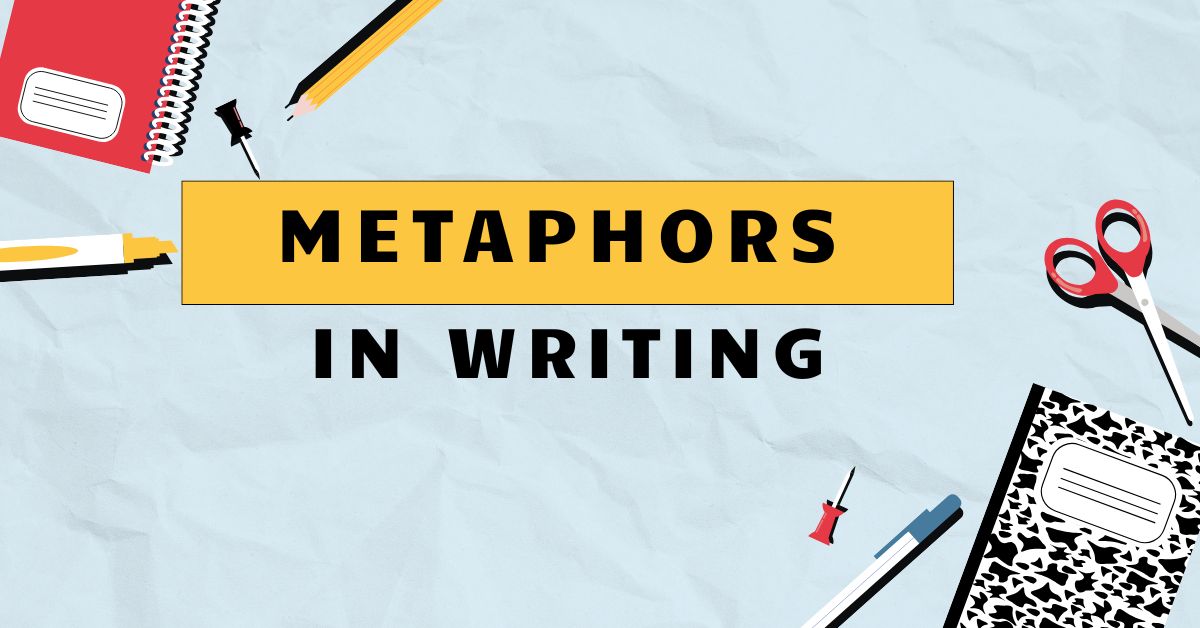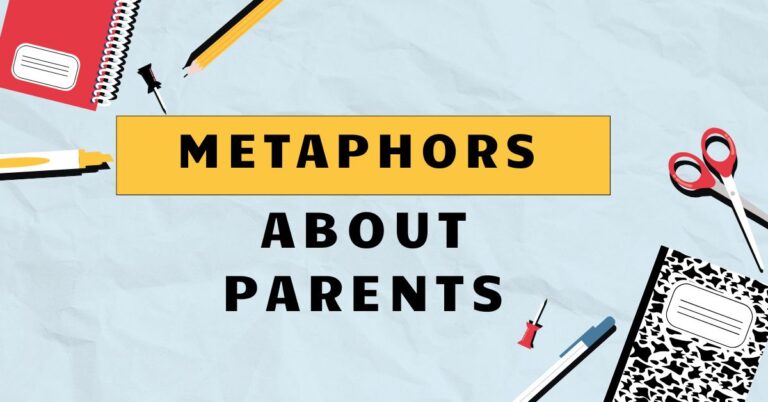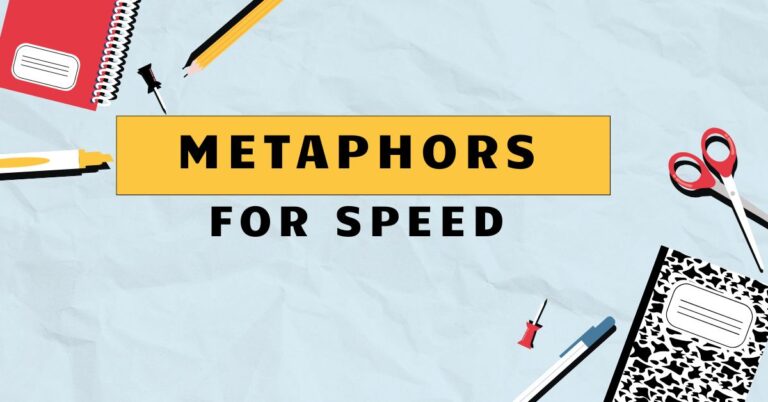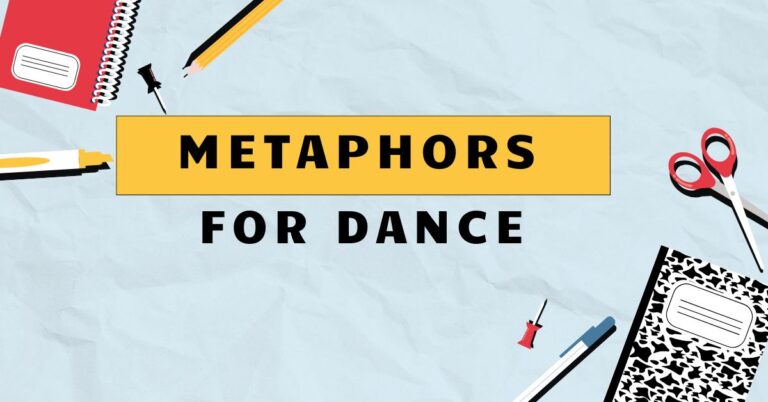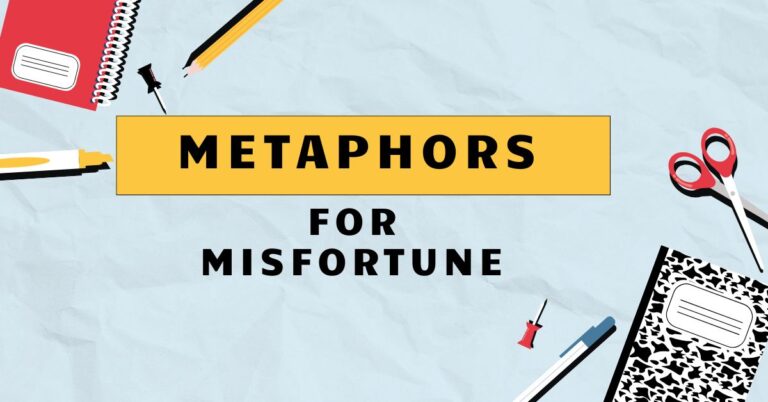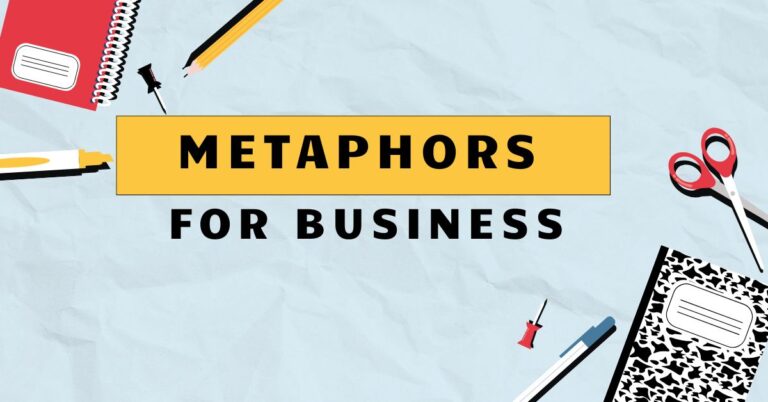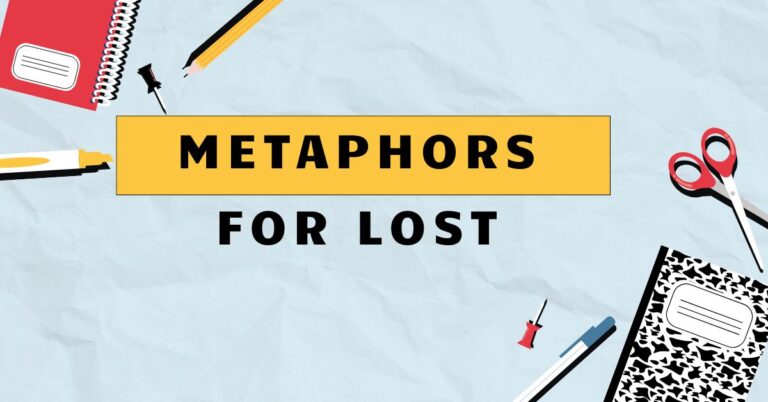50 Metaphors in Writing: Crafting Powerful Literary Devices
Metaphors are fundamental tools in writing, enriching language and conveying complex ideas in vivid and relatable ways. Understanding how to effectively use metaphors can transform ordinary prose into engaging and memorable narratives.
This article delves into the intricacies of metaphors, exploring their definition, structure, types, and usage rules. Whether you’re a student honing your writing skills, a professional seeking to enhance your communication, or simply an enthusiast eager to appreciate the art of language, this guide will equip you with the knowledge and practice necessary to master the art of metaphorical expression.
By mastering the art of crafting and identifying metaphors, writers can elevate their work, creating deeper resonance and impact with their audience. This guide provides a comprehensive overview, complete with examples and exercises, to help you confidently incorporate metaphors into your writing repertoire.
Table of Contents
- Definition of Metaphor
- Structural Breakdown of Metaphors
- Types of Metaphors
- Examples of Metaphors
- Usage Rules for Metaphors
- Common Mistakes with Metaphors
- Practice Exercises
- Advanced Topics in Metaphorical Usage
- Frequently Asked Questions
- Conclusion
Definition of Metaphor
Ametaphoris a figure of speech that directly compares two unrelated things, asserting that one thingisanother. Unlike similes, which use “like” or “as” to make comparisons, metaphors create a direct equivalence.
This comparison is not meant to be taken literally but rather to create a new understanding or perspective by highlighting shared qualities or characteristics. The power of a metaphor lies in its ability to transfer meaning and evoke imagery, making abstract concepts more concrete and relatable.
Metaphors are essential for adding depth, color, and creativity to writing.
Metaphors function as a rhetorical device, transferring qualities from one concept to another to create a new understanding. They are used in various contexts, from literature and poetry to everyday conversation and persuasive speeches.
The effectiveness of a metaphor depends on the audience’s ability to recognize the shared qualities between the two concepts being compared. A well-crafted metaphor can enhance understanding, evoke emotion, and make writing more engaging and memorable.
Structural Breakdown of Metaphors
Understanding the structure of a metaphor involves identifying its key components: thetenor, thevehicle, and theground. Thetenoris the subject being described or represented.
Thevehicleis the object or concept used to represent the tenor. Thegroundrefers to the shared characteristics or qualities between the tenor and the vehicle.
These elements work together to create a meaningful and effective metaphorical comparison.
For example, in the metaphor “Time is a thief,” ‘time’ is the tenor, ‘thief’ is the vehicle, and the shared quality (the ground) is the idea of something valuable being taken away stealthily. Recognizing these elements helps in both analyzing existing metaphors and crafting new ones.
The clarity and relevance of the ground are crucial for a metaphor to be effective and easily understood.
Types of Metaphors
Metaphors come in various forms, each with its unique characteristics and applications. Understanding these different types allows writers to use metaphors more effectively and creatively.
The main types of metaphors include standard metaphors, extended metaphors, mixed metaphors, dead metaphors, and conceptual metaphors.
Standard Metaphors
Standard metaphorsare common and widely recognized comparisons that have become integrated into everyday language. These metaphors are often used without much conscious thought, and their metaphorical nature is generally understood by most people.
They provide a quick and effective way to convey meaning.
Standard metaphors are frequently used in both spoken and written communication. Examples of standard metaphors include “heart of gold,” “sea of troubles,” and “blanket of snow.” These metaphors are easily understood because the comparisons they make are familiar and intuitive.
Extended Metaphors
Anextended metaphoris a metaphor that is developed over several lines or even throughout an entire work. It involves drawing multiple parallels between the tenor and the vehicle, creating a more complex and detailed comparison.
Extended metaphors can add depth and richness to writing, allowing for a more thorough exploration of a particular idea or theme.
Extended metaphors are often used in poetry and literature to create a sustained image or idea. For example, a poem might compare life to a journey, exploring different stages and challenges along the way.
The key to a successful extended metaphor is maintaining consistency and relevance in the comparisons being made.
Mixed Metaphors
Amixed metaphoroccurs when two or more inconsistent metaphors are combined in a single expression, often resulting in a nonsensical or humorous effect. Mixed metaphors can undermine the clarity and effectiveness of writing, as they create confusing or contradictory images.
It is important to avoid mixed metaphors in order to maintain coherence and credibility.
An example of a mixed metaphor is “Let’s nip it in the bud before it snowballs out of control.” This combines the metaphor of stopping something small from growing (nipping in the bud) with the metaphor of something gaining momentum and becoming overwhelming (snowballing). While sometimes used intentionally for comedic effect, mixed metaphors are generally considered a writing error.
Dead Metaphors
Dead metaphorsare metaphors that have become so overused that they have lost their original metaphorical meaning and are now perceived as literal expressions. These metaphors have become integrated into everyday language to the point where their figurative nature is no longer recognized.
While dead metaphors are not necessarily incorrect, they lack the impact and originality of fresh metaphors.
Examples of dead metaphors include “head of the table,” “leg of the chair,” and “falling in love.” These expressions were once novel comparisons, but now they are simply accepted as part of the standard vocabulary. Writers should be aware of dead metaphors and strive to use more original and evocative language whenever possible.
Conceptual Metaphors
Conceptual metaphorsare underlying systems of thought in which one abstract concept is understood in terms of another, more concrete concept. These metaphors are often deeply ingrained in our thinking and language, shaping the way we perceive and understand the world.
Conceptual metaphors are not always explicitly stated but rather operate at a more fundamental level of cognition.
For example, the conceptual metaphor “ARGUMENT IS WAR” underlies many common expressions, such as “He attacked my argument,” “I defended my position,” and “She won the debate.” Recognizing these conceptual metaphors can provide insight into the way we structure our thoughts and communicate with others.
Examples of Metaphors
To fully grasp the concept of metaphors, it is essential to examine various examples across different categories. The following tables provide extensive illustrations of metaphors, categorized for clarity and ease of understanding.
The following table includes examples of standard metaphors, which are commonly used and easily understood in everyday language. These metaphors provide a quick and effective way to convey meaning.
| Standard Metaphor | Explanation |
|---|---|
| Heart of gold | Describes someone who is kind and generous. |
| Sea of troubles | Represents a situation filled with difficulties and problems. |
| Blanket of snow | Describes a thick covering of snow. |
| Time is money | Emphasizes the value and limited nature of time. |
| The world is a stage | Suggests that life is a performance. |
| Laughter is the best medicine | Highlights the healing power of laughter. |
| A broken heart | Represents emotional pain and sadness. |
| A ray of hope | Indicates a small but significant sign of optimism. |
| The apple of my eye | Refers to someone who is cherished and adored. |
| Walking on eggshells | Describes a situation where one must be extremely careful not to offend someone. |
| The road to success | Implies that achieving success is a journey with challenges. |
| A storm of emotions | Represents intense and overwhelming feelings. |
| A pillar of strength | Describes someone who provides support and stability. |
| A voice of reason | Refers to someone who offers logical and sensible advice. |
| A diamond in the rough | Describes someone with potential but lacking refinement. |
| A wolf in sheep’s clothing | Represents someone who appears harmless but is actually dangerous. |
| Burning the midnight oil | Means working late into the night. |
| Hitting the nail on the head | Means being exactly right. |
| Burying the hatchet | Means making peace after a conflict. |
| Spilling the beans | Means revealing a secret. |
| A fish out of water | Describes someone who is uncomfortable in a new environment. |
| A tough nut to crack | Describes a difficult problem or person. |
| A hot potato | Describes a controversial issue. |
| A ticking time bomb | Describes a situation that is likely to become dangerous soon. |
| A golden opportunity | Describes a very good chance to do something. |
The following table showcases examples of extended metaphors, where a single metaphor is developed over several lines or throughout a work. These metaphors add depth and richness to writing.
| Extended Metaphor | Explanation |
|---|---|
| “All the world’s a stage, And all the men and women merely players; They have their exits and their entrances, And one man in his time plays many parts.” (Shakespeare, As You Like It) | Compares the world to a stage and people to actors, exploring the different roles and stages of life. |
| “Hope is the thing with feathers – That perches in the soul – And sings the tune without the words – And never stops – at all” (Emily Dickinson) | Compares hope to a bird, emphasizing its resilience and constant presence. |
| “Life is a broken-winged bird That cannot fly.” (Langston Hughes) | Compares life to a bird with a broken wing, symbolizing limitations and struggles. |
| “The fog comes on little cat feet. It sits looking over the harbor and city on silent haunches and then moves on.” (Carl Sandburg, “Fog”) | Compares fog to a cat, emphasizing its quiet, stealthy movements. |
| “My life is my own private business. It is a field that I alone must plough and plant and harvest.” | Compares life to a private field, emphasizing personal responsibility and cultivation. |
| “Education is a stairway we must climb, each step a challenge, each landing a new perspective, until we reach the summit of knowledge.” | Compares education to a stairway, emphasizing the effort and progress involved in learning. |
| “Friendship is a sheltering tree; Oh, the joys that come to me, Sheltering from life’s pouring rain, Friendship is a sheltering tree.” | Compares friendship to a sheltering tree, emphasizing its protective and comforting qualities. |
| “The mind is a garden, thoughts are the seeds, the harvest will either be flowers or weeds.” | Compares the mind to a garden, emphasizing the importance of cultivating positive thoughts. |
| “Our doubts are traitors and make us lose the good we oft might win by fearing to attempt.” (Shakespeare) | Compares doubts to traitors, emphasizing their role in hindering success. |
| “Grief is a silent storm, raging within the heart, tearing down walls, and leaving behind a landscape of sorrow.” | Compares grief to a storm, emphasizing its destructive power and emotional impact. |
| “Love is a fragile flower, blooming in the garden of the heart, needing tender care and nurturing to survive.” | Compares love to a fragile flower, emphasizing its delicate nature and need for care. |
| “The internet is a vast ocean, full of knowledge and opportunity, but also teeming with dangers and hidden reefs.” | Compares the internet to a vast ocean, emphasizing its potential and its risks. |
| “Writing is a dance; each word a step, each sentence a phrase, and each paragraph a flowing sequence of movements.” | Compares writing to a dance, emphasizing the rhythm and flow of language. |
| “A leader is a shepherd, guiding the flock, protecting them from harm, and leading them to greener pastures.” | Compares a leader to a shepherd, emphasizing their role in guiding and protecting their followers. |
| “Life is a tapestry, woven with threads of joy, sorrow, love, and loss, creating a unique and intricate design.” | Compares life to a tapestry, emphasizing the complexity and interconnectedness of experiences. |
| “Success is a marathon, not a sprint, requiring endurance, perseverance, and a steady pace to reach the finish line.” | Compares success to a marathon, emphasizing the need for long-term commitment and effort. |
| “Memories are like stars, twinkling in the night sky of the mind, each one a distant light, reminding us of moments past.” | Compares memories to stars, emphasizing their distant and illuminating nature. |
| “The city is a jungle, full of predators and prey, where only the strong survive and the weak are consumed.” | Compares the city to a jungle, emphasizing its competitive and harsh environment. |
| “Art is a mirror, reflecting society’s values, beliefs, and struggles, allowing us to see ourselves in a new light.” | Compares art to a mirror, emphasizing its ability to reflect and reveal aspects of society. |
| “Dreams are seeds, planted in the soil of the imagination, needing nourishment and care to grow into reality.” | Compares dreams to seeds, emphasizing the need for nurturing and effort to achieve them. |
The following table illustrates examples of mixed metaphors, which combine inconsistent images and can create confusion or humor. Recognizing and avoiding mixed metaphors is crucial for clear and effective writing.
| Mixed Metaphor | Explanation |
|---|---|
| “Let’s nip it in the bud before it snowballs out of control.” | Combines stopping something small from growing with something gaining momentum. |
| “We need to grab the bull by the horns and put the pedal to the metal.” | Combines confronting a challenge head-on with accelerating progress. |
| “He’s skating on thin ice, but he’s also playing with fire.” | Combines being in a precarious situation with taking dangerous risks. |
| “That’s the last straw that broke the camel’s back, but it’s also a drop in the bucket.” | Combines a final burden with something insignificant. |
| “We’re burning the candle at both ends to stay afloat.” | Combines overworking with struggling to survive financially. |
| “He’s a loose cannon, but he’s also got his ducks in a row.” | Combines being unpredictable with being organized. |
| “We need to think outside the box and plant the seeds of innovation.” | Combines creative thinking with initiating growth. |
| “She’s climbing the ladder of success, but she’s also hitting a brick wall.” | Combines progressing in a career with encountering an obstacle. |
| “He’s a diamond in the rough, but he’s also a wolf in sheep’s clothing.” | Combines having potential with being deceptively dangerous. |
| “We need to stay ahead of the curve and keep our eye on the ball.” | Combines being innovative with maintaining focus. |
| “He’s got his finger on the pulse, but he’s also burying his head in the sand.” | Combines being well-informed with ignoring reality. |
| “We need to bridge the gap and put our best foot forward.” | Combines overcoming a division with making a good impression. |
| “She’s sailing in uncharted waters, but she’s also got a firm grip on the wheel.” | Combines being in an unfamiliar situation with being in control. |
| “We need to bite the bullet and cut our losses.” | Combines enduring hardship with minimizing negative consequences. |
| “He’s a shining star, but he’s also a dark horse.” | Combines being prominent with being unexpected. |
| “We need to strike while the iron is hot and nip it in the bud.” | Combines acting quickly with stopping something early. |
| “She’s a breath of fresh air, but she’s also a tough nut to crack.” | Combines being refreshing with being difficult. |
| “We need to weather the storm and keep our heads above water.” | Combines enduring a crisis with staying afloat. |
| “He’s a jack-of-all-trades, but he’s also a one-trick pony.” | Combines being versatile with being limited. |
| “We need to think outside the box and touch base.” | Combines being creative with communicating. |
Usage Rules for Metaphors
Using metaphors effectively requires adherence to certain rules. Clarity is paramount; the comparison should be easily understood by the audience.
Relevance is also crucial; the shared qualities between the tenor and the vehicle should be meaningful and appropriate. Consistency is important, especially in extended metaphors, where the comparison should be maintained throughout.
Originality can enhance the impact of a metaphor, making it more memorable and thought-provoking. Avoid clichés and mixed metaphors to maintain the integrity of your writing.
Consider the audience when crafting metaphors. A metaphor that resonates with one audience may not be effective for another.
Be mindful of cultural differences and levels of understanding. Test metaphors on a small group before using them in a broader context to ensure they are clear and impactful.
Use metaphors sparingly and strategically to avoid overwhelming the reader.
Common Mistakes with Metaphors
One common mistake is usingclichéd metaphorsthat have lost their impact through overuse. For example, saying “life is a rollercoaster” is a cliché that doesn’t offer fresh insight.
Another mistake is creatingmixed metaphors, which combine incongruous images and confuse the reader. For instance, “We need to grab the bull by the horns and put the pedal to the metal” is a mixed metaphor.
Another frequent error is using metaphors that aretoo obscureor require specialized knowledge to understand. The goal is to enhance clarity, not create confusion.
Overusing metaphors can also diminish their impact. Use them judiciously to highlight key points and add color to your writing.
Always ensure the metaphor aligns with the overall tone and purpose of the piece.
Here are some examples of common mistakes with metaphors:
| Incorrect | Correct | Explanation |
|---|---|---|
| “Life is a rollercoaster; we need to grab the bull by the horns.” | “Life is a challenging journey; we need to face obstacles with courage.” | The incorrect example combines a cliché with a mixed metaphor. The correct example uses a more original and consistent comparison. |
| “The project is a house of cards teetering on the edge of oblivion, so let’s put the pedal to the metal.” | “The project is fragile and at risk of failure, so we need to act quickly and decisively.” | The incorrect example uses a mixed metaphor, combining fragility with speed. The correct example uses clear and direct language. |
| “Her smile was a ray of sunshine, and she poured oil on troubled waters.” | “Her smile was a ray of sunshine, and her presence brought peace to the troubled situation.” | The incorrect example uses a clichéd metaphor and a mixed metaphor. The correct example uses a more original and consistent comparison. |
| “He’s a loose cannon, and we need to nip it in the bud.” | “He’s unpredictable, and we need to address the issue promptly.” | The incorrect example uses a mixed metaphor. The correct example uses clear and direct language. |
| “The company is a ship that has sailed, but we need to think outside the box.” | “The company is in a difficult situation, but we need to find innovative solutions.” | The incorrect example combines a metaphor of failure with a call for creativity. The correct example uses clear and direct language. |
Practice Exercises
These exercises will help you practice identifying and creating metaphors. Each exercise focuses on a different aspect of metaphorical usage.
Exercise 1: Identifying Metaphors
Identify the metaphors in the following sentences. For each metaphor, identify the tenor, vehicle, and ground.
| Sentence | Tenor | Vehicle | Ground |
|---|---|---|---|
| 1. The city is a concrete jungle. | |||
| 2. Her words were daggers. | |||
| 3. He is a shining star. | |||
| 4. Time is a river. | |||
| 5. The internet is an information superhighway. | |||
| 6. Their marriage is a rocky road. | |||
| 7. The classroom was a zoo. | |||
| 8. He is a night owl. | |||
| 9. She is the black sheep of the family. | |||
| 10. The news was a bitter pill to swallow. |
Exercise 1: Answer Key
| Sentence | Tenor | Vehicle | Ground |
|---|---|---|---|
| 1. The city is a concrete jungle. | City | Jungle | Wild, chaotic, dangerous |
| 2. Her words were daggers. | Words | Daggers | Sharp, painful, harmful |
| 3. He is a shining star. | He | Star | Bright, talented, admired |
| 4. Time is a river. | Time | River | Flowing, continuous, unstoppable |
| 5. The internet is an information superhighway. | Internet | Superhighway | Fast, accessible, expansive |
| 6. Their marriage is a rocky road. | Marriage | Rocky Road | Difficult, challenging, uneven |
| 7. The classroom was a zoo. | Classroom | Zoo | Noisy, chaotic, uncontrolled |
| 8. He is a night owl. | He | Night Owl | Active at night, nocturnal |
| 9. She is the black sheep of the family. | She | Black Sheep | Different, outcast, non-conforming |
| 10. The news was a bitter pill to swallow. | News | Bitter Pill | Unpleasant, difficult to accept |
Exercise 2: Creating Metaphors
Create a metaphor for each of the following tenors. Be creative and try to avoid clichés.
| Tenor | Metaphor |
|---|---|
| 1. Fear | |
| 2. Hope | |
| 3. Anger | |
| 4. Love | |
| 5. Success | |
| 6. Failure | |
| 7. Memories | |
| 8. Dreams | |
| 9. Challenges | |
| 10. Opportunities |
Exercise 2: Answer Key (Example Answers)
| Tenor | Metaphor |
|---|---|
| 1. Fear | Fear is a shadow that clings to your heels. |
| 2. Hope | Hope is a fragile seedling pushing through concrete. |
| 3. Anger | Anger is a wildfire consuming reason. |
| 4. Love | Love is a symphony of shared moments. |
| 5. Success | Success is a mountain peak after a long climb. |
| 6. Failure | Failure is a detour on the road to success. |
| 7. Memories | Memories are echoes in the chambers of the heart. |
| 8. Dreams | Dreams are blueprints for a future yet to be built. |
| 9. Challenges | Challenges are stepping stones to growth. |
| 10. Opportunities | Opportunities are open doors to new possibilities. |
Exercise 3: Correcting Mixed Metaphors
Rewrite the following sentences to eliminate the mixed metaphors and create clear, consistent comparisons.
| Original Sentence (Mixed Metaphor) | Revised Sentence (Clear Metaphor) |
|---|---|
| 1. We need to grab the bull by the horns and put the pedal to the metal. | |
| 2. He’s skating on thin ice, but he’s also playing with fire. | |
| 3. That’s the last straw that broke the camel’s back, but it’s also a drop in the bucket. | |
| 4. We’re burning the candle at both ends to stay afloat. | |
| 5. He’s a loose cannon, but he’s also got his ducks in a row. | |
| 6. We need to think outside the box and plant the seeds of innovation. | |
| 7. She’s climbing the ladder of success, but she’s also hitting a brick wall. | |
| 8. He’s a diamond in the rough, but he’s also a wolf in sheep’s clothing. | |
| 9. We need to stay ahead of the curve and keep our eye on the ball. | |
| 10. He’s got his finger on the pulse, but he’s also burying his head in the sand. |
Exercise 3: Answer Key (Example Answers)
| Original Sentence (Mixed Metaphor) | Revised Sentence (Clear Metaphor) |
|---|---|
| 1. We need to grab the bull by the horns and put the pedal to the metal. | We need to confront this challenge directly and act decisively. |
| 2. He’s skating on thin ice, but he’s also playing with fire. | He’s in a precarious situation and taking unnecessary risks. |
| 3. That’s the last straw that broke the camel’s back, but it’s also a drop in the bucket. | That’s the final burden that has made the situation unbearable. |
| 4. We’re burning the candle at both ends to stay afloat. | We’re overworking ourselves to maintain our current position. |
| 5. He’s a loose cannon, but he’s also got his ducks in a row. | He is unpredictable and difficult to control. |
| 6. We need to think outside the box and plant the seeds of innovation. | We need to generate new and creative ideas. |
| 7. She’s climbing the ladder of success, but she’s also hitting a brick wall. | She is making progress in her career, but she’s encountering significant obstacles. |
| 8. He’s a diamond in the rough, but he’s also a wolf in sheep’s clothing. | He appears to have potential, but he is actually dangerous. |
| 9. We need to stay ahead of the curve and keep our eye on the ball. | We need to remain innovative and focused on our goals. |
| 10. He’s got his finger on the pulse, but he’s also burying his head in the sand. | He is aware of what’s happening, but he is choosing to ignore the problems. |
Advanced Topics in Metaphorical Usage
At an advanced level, understanding the cognitive aspects of metaphors becomes crucial. Cognitive linguistics explores how metaphors shape our thinking and understanding of abstract concepts.
This involves studying conceptual metaphors, which are deeply ingrained in our thought processes and influence how we perceive the world. Analyzing the cultural context of metaphors is also essential, as metaphors can have different meanings and connotations in different cultures.
Furthermore, experimenting with novel and unconventional metaphors can add a unique and powerful dimension to your writing, pushing the boundaries of language and expression.
Another advanced topic is the use of metaphors in persuasive writing and rhetoric. Mastering the art of crafting compelling metaphors can significantly enhance the impact of your arguments and engage your audience on an emotional level.
This involves understanding how to use metaphors to frame issues, evoke emotions, and create a sense of shared understanding. Additionally, exploring the use of metaphors in different genres, such as poetry, fiction, and non-fiction, can provide valuable insights into the versatility and adaptability of this powerful literary device.
Frequently Asked Questions
- What is the difference between a metaphor and a simile?
A metaphor directly equates two unlike things, stating that one thing *is* another (e.g., “Time is a thief”). A simile, on the other hand, compares two things using “like” or “as” (e.g., “Time is like a thief”). Metaphors are more assertive and create a stronger sense of equivalence, while similes offer a more explicit comparison.
- How can I avoid using clichéd metaphors?
To avoid clichés, strive for originality in
your comparisons. Think deeply about the qualities you want to convey and look for fresh, unexpected ways to express them. Read widely and pay attention to the language used by other writers to identify and avoid overused expressions. Experiment with different combinations of tenor and vehicle to create unique and memorable metaphors.
- What should I do if I accidentally create a mixed metaphor?
If you realize you’ve created a mixed metaphor, revise the sentence to create a clear and consistent comparison. Identify the conflicting images and choose one that best conveys your intended meaning. Rewrite the sentence to support that image and eliminate any inconsistencies. If necessary, replace the entire metaphor with a more straightforward expression.
- How can I tell if a metaphor is too obscure?
A metaphor is too obscure if your audience is likely to struggle to understand the connection between the tenor and the vehicle. Test your metaphor on a small group and ask for feedback. If they find it confusing or difficult to interpret, revise it to make the comparison more accessible. Consider providing additional context or explanation to help your audience understand the intended meaning.
- Can metaphors be used in technical writing?
Yes, metaphors can be used in technical writing, but they should be used sparingly and with caution. The primary goal of technical writing is clarity, so metaphors should only be used if they enhance understanding and do not introduce ambiguity. Choose metaphors that are familiar and easily understood by your target audience, and avoid overly creative or abstract comparisons.
- How do conceptual metaphors influence our thinking?
Conceptual metaphors shape our thinking by providing a framework for understanding abstract concepts in terms of more concrete experiences. For example, the conceptual metaphor “ARGUMENT IS WAR” influences how we approach and understand arguments, shaping our language and behavior. Recognizing these underlying metaphors can help us become more aware of our cognitive biases and assumptions.
- What role do metaphors play in storytelling?
Metaphors play a crucial role in storytelling by adding depth, color, and emotional resonance to narratives. They can be used to create vivid imagery, convey complex emotions, and develop themes. Effective metaphors can make stories more engaging, memorable, and meaningful for readers, enhancing their overall experience.
- How can I improve my ability to create effective metaphors?
To improve your ability to create effective metaphors, practice regularly and experiment with different approaches. Read widely and analyze the metaphors used by other writers. Keep a notebook of interesting comparisons and ideas. Seek feedback from others and be open to revision. With practice and persistence, you can develop your metaphorical skills and enhance your writing.
- Are there any cultural considerations when using metaphors?
Yes, cultural considerations are important when using metaphors, as metaphors can have different meanings and connotations in different cultures. Be mindful of cultural differences and avoid using metaphors that may be offensive or misunderstood by your target audience. Research the cultural context of your metaphors and adapt your language accordingly to ensure effective communication.
- How do I know if I am overusing metaphors in my writing?
You are overusing metaphors if they distract from your message or make your writing feel cluttered or confusing. If every sentence contains a metaphor, your writing may become overwhelming and difficult to follow. Use metaphors strategically to highlight key points and add color to your writing, but avoid using them excessively. Aim for a balance between figurative and literal language to maintain clarity and impact.
Conclusion
Metaphors are powerful tools that can significantly enhance the quality and impact of your writing. By understanding the definition, structure, types, and usage rules of metaphors, you can effectively incorporate them into your work, creating deeper resonance and engagement with your audience.
Avoiding common mistakes, such as clichés and mixed metaphors, is crucial for maintaining clarity and credibility. Practice identifying and crafting metaphors through exercises and seek feedback to refine your skills.
As you delve into advanced topics, such as the cognitive aspects and cultural context of metaphors, you will gain a deeper appreciation for the art of metaphorical expression. With consistent effort and attention to detail, you can master the art of using metaphors to elevate your writing and communicate your ideas with greater precision and impact.

